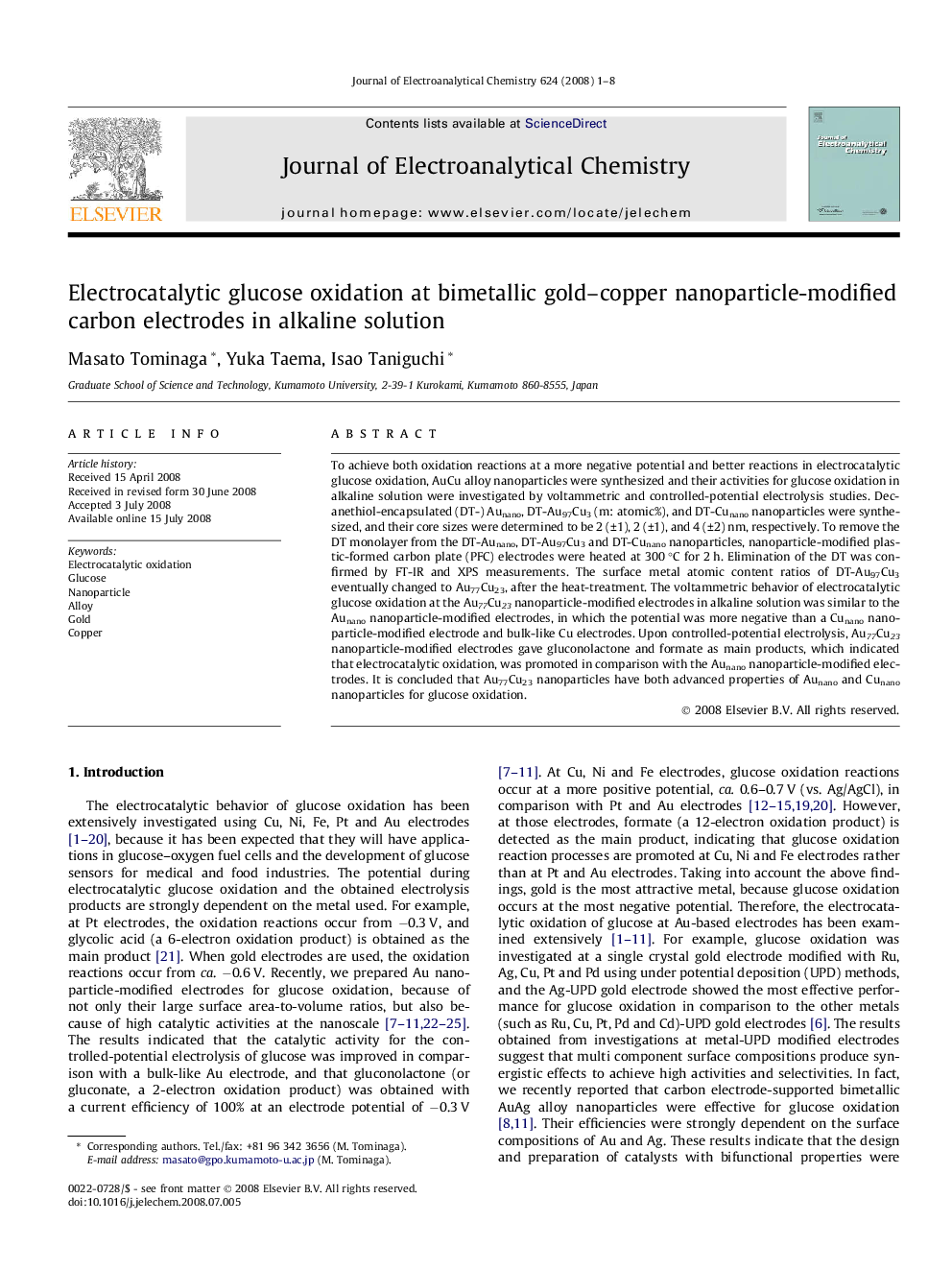| Article ID | Journal | Published Year | Pages | File Type |
|---|---|---|---|---|
| 220322 | Journal of Electroanalytical Chemistry | 2008 | 8 Pages |
To achieve both oxidation reactions at a more negative potential and better reactions in electrocatalytic glucose oxidation, AuCu alloy nanoparticles were synthesized and their activities for glucose oxidation in alkaline solution were investigated by voltammetric and controlled-potential electrolysis studies. Decanethiol-encapsulated (DT-) Aunano, DT-Au97Cu3 (m: atomic%), and DT-Cunano nanoparticles were synthesized, and their core sizes were determined to be 2 (±1), 2 (±1), and 4 (±2) nm, respectively. To remove the DT monolayer from the DT-Aunano, DT-Au97Cu3 and DT-Cunano nanoparticles, nanoparticle-modified plastic-formed carbon plate (PFC) electrodes were heated at 300 °C for 2 h. Elimination of the DT was confirmed by FT-IR and XPS measurements. The surface metal atomic content ratios of DT-Au97Cu3 eventually changed to Au77Cu23, after the heat-treatment. The voltammetric behavior of electrocatalytic glucose oxidation at the Au77Cu23 nanoparticle-modified electrodes in alkaline solution was similar to the Aunano nanoparticle-modified electrodes, in which the potential was more negative than a Cunano nanoparticle-modified electrode and bulk-like Cu electrodes. Upon controlled-potential electrolysis, Au77Cu23 nanoparticle-modified electrodes gave gluconolactone and formate as main products, which indicated that electrocatalytic oxidation, was promoted in comparison with the Aunano nanoparticle-modified electrodes. It is concluded that Au77Cu23 nanoparticles have both advanced properties of Aunano and Cunano nanoparticles for glucose oxidation.
